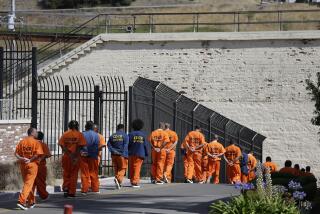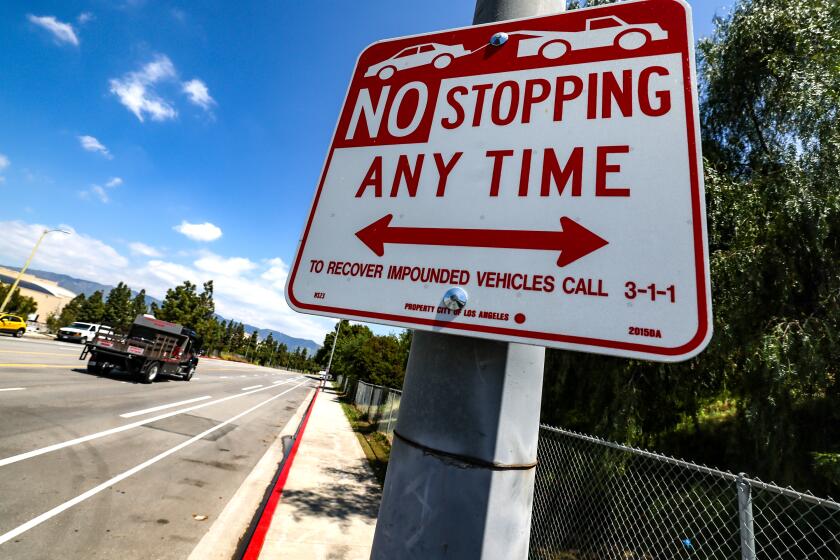Brown takes a page from Aristotle
SACRAMENTO--Robbing Peter in the suburbs to pay Paul in the inner city seems politically perilous. Even unjust.
Particularly after we just soaked the rich to balance the state budget and keep public schools afloat.
I mean, how much income redistribution are Californians in the mood for?
In this new scheme of Gov. Jerry Brown’s, it isn’t only the rich getting robbed. It’s the middle class.
Brown’s budget proposal includes a revolutionary plan to distribute future school funding much differently from the way it has been. Spending on poor children, English learners and foster kids would grow a lot faster. Funds for middle-class-and-up kids whose native tongues are English would grow more slowly.
But like all education funding formulas, Brown’s proposal is complex, if not convoluted.
School districts where half the students are economically disadvantaged or are English learners or are in foster homes would receive a big funding boost. But the money would come out of the state’s total education pot, leaving less for the other districts.
Economically disadvantaged would be defined as being eligible for government-subsidized lunches.
The Brown administration did not have a breakdown of district winners and losers. Wait a couple of weeks, officials said.
Among California’s 6.2 million K-12 students, according to the state finance department, roughly 3.3 million receive subsidized lunches. There are 1.4 million English learners. But it’s not clear how many would benefit from the extra funding because not all are concentrated in the eligible districts.
Brown explained his thinking this way at a budget-unveiling last week:
“Our future depends not on across-the-board funding, but in disproportionately funding those schools that have disproportionate challenges.... Aristotle said treating unequals equally is not justice.... Growing up in Compton or Richmond is not like it is to grow up in Los Gatos or Beverly Hills or Piedmont....
“If you look at a classroom in Piedmont and you look at one in Compton, it’s a lot different. The [Piedmont] families have far more money, far more access to the better things in life. And the extent to which we can offset that by putting more funding into those school districts [like Compton], we’re going to do that.”
The Democratic governor continued:
“Maybe some suburbanites might not see it. But I think the ones who can see over the horizon and realize that an aging group of people have a vested interest in making sure that the generation coming along who’s going to pay their Social Security and maybe operating their nursing home when they’re sitting there drooling, they may want to make sure that they’re making enough money that the social harmony is maximized....
“That’s the whole essence of the progressive agenda, to try to compensate for the global inequalities that are growing.”
Brown acknowledged that his proposal “is controversial” but insisted “it is fair, it’s right and it’s just.... This really is a classic case of justice to unequals.... It’s a powerful principle.”
And you may have thought that Brown II was a centrist. Not all the time. Here the former Jesuit seminarian is paddling his canoe left toward what he envisions as a more equal and just society.
But the governor who talks about maximizing social harmony in the future should worry about dividing the state further between the classes immediately. Californians need to be pulling together as they struggle out of the great recession. Government shouldn’t be alienating the core middle class to benefit anyone.
Moreover, the Democratic Party has been expanding into suburbs once represented by Republicans. Democratic lawmakers might think twice about jeopardizing their recently won seats by raiding the local school treasuries to help big-city districts, such as L.A. Unified.
Voters bought Brown’s proposal in November to substantially increase income taxes on the wealthy to avoid a $5.4-billion drain on K-12 schools. Shortchanging some of those schools to help others wasn’t part of the deal.
The Brown camp points out that all districts would continue to receive more funding as the economy grows. Yes, but some would receive much more, and others less, than they would under the current division of the pie.
And as any parent with a schoolchild knows, all public schools in California were whacked hard by Sacramento’s spending cuts. They’re just starting to recover. None has any money to share and probably won’t for the foreseeable future.
“If you’re not growing the pot, you can’t give more to some districts without taking from others,” says Assemblywoman Joan Buchanan (D-Alamo), who heads the Assembly Education Committee and is a former school board member. She’s skeptical of the governor’s plan.
Brown proposed another version last year, but the Legislature shot it down. Bad timing because of his Proposition 30 tax proposal, lawmakers thought. If the measure failed and school funding was slashed, they didn’t want to be stuck with a controversial new funding formula.
Last year, Brown called his plan “the weighted student formula.” Bureaucratic and nonsensical. This year, he affixed a more marketable tag: “Local Control Funding Formula.”
It’s called “local control” because the state would eliminate requirements for so-called categorical programs, such as busing, career tech and textbooks. Schools would have more flexibility.
“Whenever you have to re-brand something, there’s a problem,” says Assemblywoman Susan Bonilla (D-Concord), who heads the budget subcommittee that deals with education financing.
Bonilla says schools in her district were “horrified” at Brown’s proposal last year. As for the new version, the former teacher says: “If we’re talking about taking money away from schools, it’ll be a huge problem.”
Brown’s right. Paul needs more money. But he’s wrong to mug Peter.
More to Read
Start your day right
Sign up for Essential California for news, features and recommendations from the L.A. Times and beyond in your inbox six days a week.
You may occasionally receive promotional content from the Los Angeles Times.







